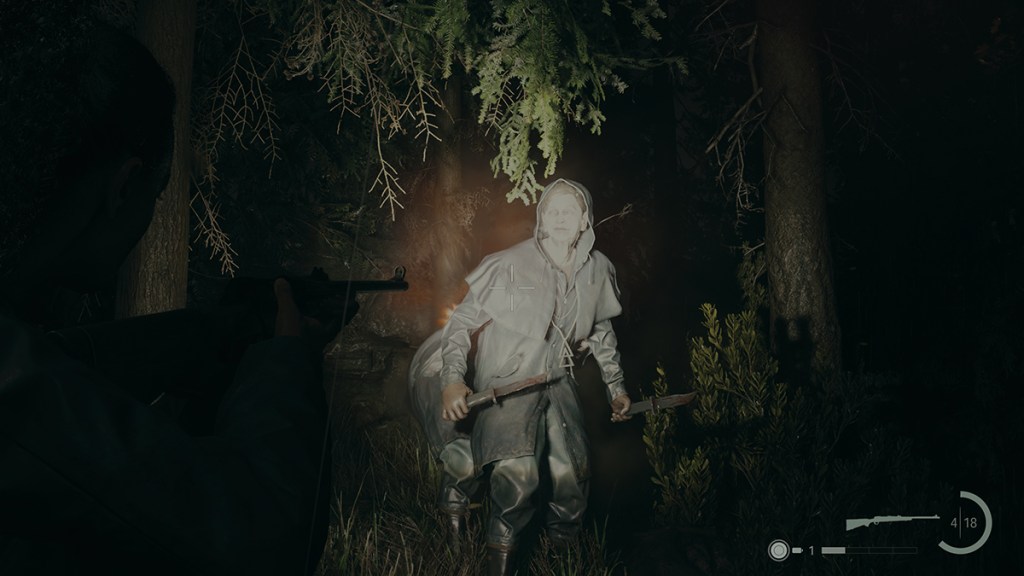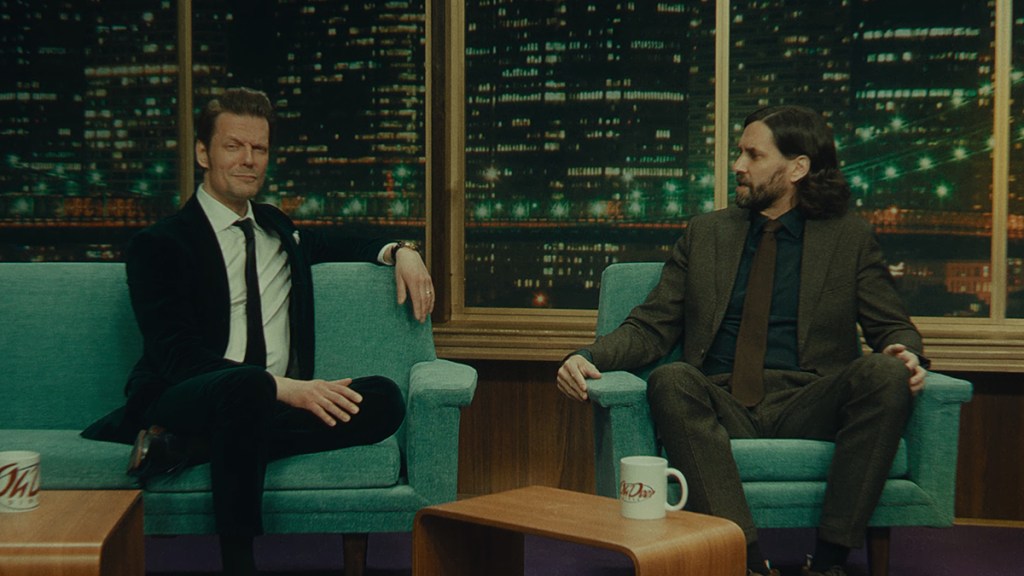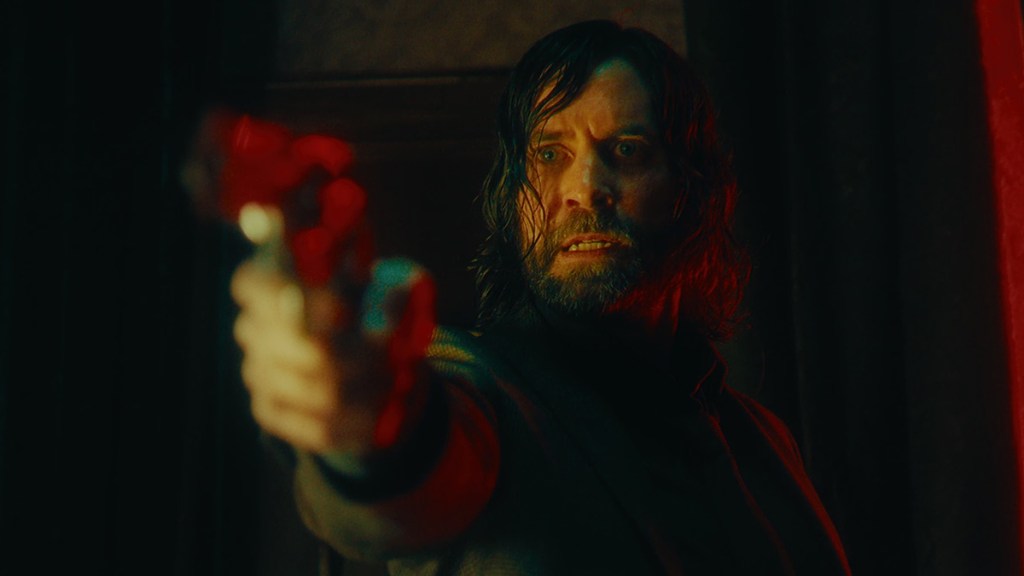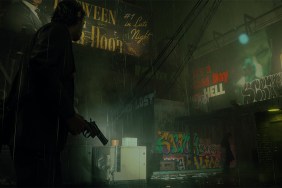Alan Wake has been tirelessly tapping away at his typewriter for over a decade in an effort to pump out the perfect follow-up to his hit Alex Casey series. A sophomore slump would do more than sink his career since it, thanks to the Dark Place, would also doom everyone he holds dear.
Following up on success is a tough responsibility and something that developer Remedy Entertainment knows all too well with Alan Wake 2. Alan Wake has been trying to develop his new series for as long as the studio has been trying to make Alan Wake 2, creating a fairly obvious and meta-parallel between creator and creation. But 13 years was not enough time to polish off a fitting sequel, as Alan Wake 2 is a buggy and frustrating title that falls well short of what Remedy is capable of.
Remedy’s experience making action games has unexpectedly not translated well to Alan Wake 2 in its descent into the action horror genre. Alan and Saga, the other protagonist, move and shoot like they are in a Resident Evil game but without the nuance and fluidity that make those Capcom-developed titles adept shooters. Dodging is not reliable and often fails to effectively weave through shovel swipes and flying sickles (the latter of which can fly through solid objects and can’t be shot out of the air). Readying items and switching between them is a sluggish process that seems even more sluggish when trying to frantically heal in the midst of combat, a futile task that often ends with being pounced on by a blade-wielding cult member.

Aiming at these enemies is also a chore because of how often they fly off-screen or warp forward to get in a cheap slash or three. It’s doubly frustrating in the game’s many pitch-black areas where darkness and its many effects obscure the action and twist tension into tedium. Burning away a foe’s outer layer of darkness is also meant to build tension as it tacks on one more step to worry about in the middle of combat. However, it’s just another repetitive aspect that never grows or changes and only demonstrates how shallow it all is.
Alan Wake 2 fumbles the “action” part of its status as an “action horror” game, yet its failures in the horror department are far grander. Its penchant for darkness spotlights how incredible Alan Wake 2’s lighting is — it’s a stunning mix of moody neon signs, reflective surfaces, and natural sun rays — but it doesn’t utilize that tech to ratchet up the terror. The horror is only implied through the narrative and doesn’t show up in the gameplay since it doesn’t use the environment or enemy spawns to frighten players. Instead, almost all of its scares are hacky live-action clips that sharply blare the audio and take up the whole screen in a desperate attempt to catch the player off guard.
Alan Wake 2 prioritizes these embarrassing, Bloober Team-esque jump scares instead of creating an atmosphere where unpredictability naturally evokes dread. The ghosts that show up in Alan’s half of the campaign that have players second guessing which ones are harmless and which ones are hostiles seem like a decent realization of this notion but are overused and never change, thus dulling their impact. Not even its infrequent checkpoints can sow fear in the player since losing 15 minutes of progress is only infuriating when bugs or unfair deaths are the cause.

Remedy has almost always been able to use its storytelling abilities as a shield against lackluster gameplay, but Alan Wake 2’s narrative can’t bear that load. The studio’s affinity for absurdity and mystery shines in the early stages, though, as off-kilter talk show segments and a constant barrage of new questions leave a breadcrumb trail that’s impossible not to follow. Its use of live-action scenes not only accentuates the team’s style but also helps reinforce how silly it all is and ties into the meta layers of the story. Writer and director Sam Lake’s roles in the game strengthen its metaphors for the ups and downs of the creative process and how art is both a struggle and a healing power, all of which is beamed through a twisted Lynchian lens.
Alan Wake 2, however, lacks follow-through. It uses Dark Place magical bullshit to explain away more than a few of its mysteries instead of properly building up convincing justifications. Not everything in Alan Wake 2 needs to make perfect sense; that’s not what Remedy’s brand of weirdness is about. Control — the team’s magnum opus — and Alan Wake gave players incomplete pictures and were not always chained to logic.
The main difference here is quantity. Alan Wake 2 presents all these enigmas and then is unconcerned with giving satisfying answers to most of them. It loses its bearings as it ventures deeper into the depths of its riddles and sinks when it becomes clear in the last act that it isn’t concerned with anything but vibes and setting up a future game. Its finale is emblematic of these shortcomings since it offers no cathartic release and only raises more questions, a bold move for a sequel that took 13 years to come out.
Alan Wake 2 Review: Final Verdict
Those 13 years should have led to something better, and it’s surprising that they haven’t. Alan Wake’s gunplay has gone from dull to frustrating in the sequel, while its venture into true survival horror has been plagued by predictability and amateurish jump scares. Its narrative has a few memorable moments and is able to periodically use its outlandish antics to its advantage, yet it is still dragged down by its refusal to provide enough rewarding resolutions to its litany of riddles. Alan Wake 2 doesn’t improve on what made the original such a cult hit and is instead an uncharacteristically rough draft that needed more edits. It’s not a lake or an ocean. It’s a disappointment.
-
Beautiful visuals with some stunning lighting
-
A unique blend of well-acted live-action scenes and traditional video game cutscenes
-
Awful checkpoints
-
Clunky combat and cheap jump scares make gameplay a chore
-
The story lacks a rewarding ending and is often weird just for the sake of it
-
Buggy
Disclaimer: This Alan Wake 2 review is based on a PS5 copy provided by the publisher. Played on version 1.000.005.









